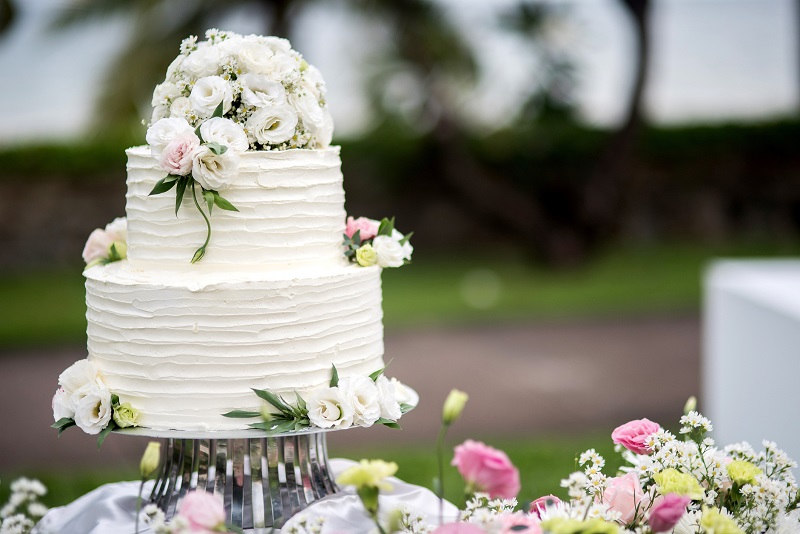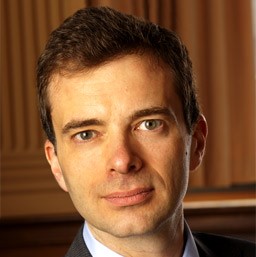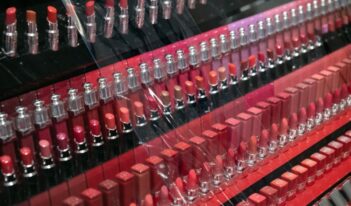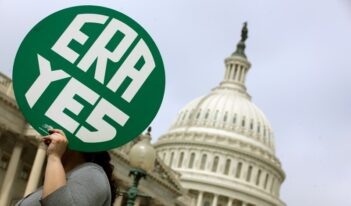
While skirting the First Amendment, the Court set a potentially far-reaching standard for finding bias.
In Masterpiece Cakeshop v. Colorado Civil Rights Commission, the U.S. Supreme Court considered a dispute involving a baker in Lakewood, Colorado named Jack Phillips who refused to do business with a gay couple who came into his store looking to order a cake for their wedding celebration.
Colorado has a public accommodations statute that protects gay people from discrimination in the marketplace, and the baker violated that law when he refused to sell goods that he would have sold to another couple solely because this couple was gay. Phillips argued that enforcing the law against him would violate his religious beliefs and his right of free expression under the First Amendment as a seller of artistic cakes. Had the Court accepted these arguments, it could have greatly undermined the efficacy of anti-discrimination laws in the public market and the workplace, making Masterpiece Cakeshop a high-stakes case.
But the Court left those questions unanswered.
Instead, it found that the record before the Colorado Civil Rights Commission evidenced hostility toward Phillips’s religious beliefs in violation of the constitutional requirement of religious neutrality, and it reversed the ruling against him on those grounds. Because Court watchers expected a major constitutional ruling on the First Amendment from Masterpiece Cakeshop, the general reaction to the record-specific decision has been that it decided very little and was a one-off with no broader implications.
I suggest otherwise. Although the principle of religious neutrality in government is well established, the standard that the Court applied to the record before the Colorado commission was remarkable. Masterpiece Cakeshop may wind up shaping the way that we measure impermissible bias in the business of government.
The Court’s finding of non-neutrality on the part of the Colorado commission was based on three statements made by individual commissioners in two successive hearings, which the Court found to exhibit hostility toward Phillips’s beliefs. Two of them were anodyne. In an initial hearing, a commissioner stated that the owner of a business can believe “what he wants to believe” but cannot always act on his religious beliefs “if he decides to do business in the state.” Later in that hearing, the same commissioner said “if a businessman wants to do business in the state and he’s got an issue with the — the law’s impacting his personal belief system, he needs to look at being able to compromise.” These are simple observations about the commissioner’s understanding of how the law operates. Indeed, they might reasonably be understood as an attempt to recognize the business owner’s humanity while explaining why his position will not prevail. There is no element of hostility or bias on their face.
The third statement, in a subsequent hearing held two months later, is the one that the Court apparently found the most galling:
I would also like to reiterate what we said in the hearing or the last meeting. Freedom of religion and religion has been used to justify all kinds of discrimination throughout history, whether it be slavery, whether it be the holocaust, whether it be—I mean, we—we can list hundreds of situations where freedom of religion has been used to justify discrimination. And to me it is one of the most despicable pieces of rhetoric that people can use to—to use their religion to hurt others.
I think there are legitimate questions about whether this kind of editorializing from the bench is appropriate. But only the most tendentious reader could conclude that the commissioner was suggesting here that the discriminatory practices in this case are the moral equivalent of slavery and the Holocaust, as the Court implies. Sadly, people are far too quick to invoke extreme moral outrages as points of reference when they are trying to make a point, but the point here was about “situations where freedom of religion has been used to justify discrimination.”
Whether or not this commissioner should have engaged in this kind of editorializing, all the quoted passage clearly establishes is strong disapproval of the bakery owner’s use of religious belief to justify discrimination. Whether it also demonstrates hostility toward Phillips because of his religious identity or beliefs is, at the least, subject to debate on the face of this record. But so the Court concluded, emphasizing that there was “no objection to these comments from other commissioners” and that the Colorado courts that heard the dispute on appeal “did not mention those comments, much less express concern with their content.”
The Court then compared the Commission’s treatment of Masterpiece with the cases of three other Colorado bakeries that had complaints filed against them by a tester: a religious advocate who went to the bakeries and asked for cakes that used Christian text or images to denigrate gay relationships. When they declined to make those cakes, the tester alleged that he had been denied service because of his religious beliefs. In each case, the Colorado Civil Rights Commission found no discrimination, concluding that the tester had been turned away because he was asking the bakeries to create products that degrade others, which the bakers said they would not do for anyone, whether or not the degrading messages were grounded in religious sentiment. Unlike Masterpiece, which had a stated policy of refusing to provide some of its goods to gay customers, these bakeries had no stated anti-religious policy and no record of turning away religious customers.
Nonetheless, the Court found that “the Commission’s consideration of Phillips’s religious objection did not accord with its treatment of these other objections.” On the strength of that record—the statements quoted above and the comparison to the tester cases— the Court concluded that “the Commission’s treatment of Phillips’ case violated the State’s duty under the First Amendment not to base laws or regulations on hostility to a religion or religious viewpoint” and reversed the decision below.
I will assume that the Supreme Court was issuing a ruling based on generally applicable principles here. There is much speculation that the Court intended to decide the broad First Amendment questions when it first decided to hear an appeal in Masterpiece Cakeshop but then lost the will to do so, perhaps concluding that recognizing any free speech right on the part of businesses in this setting would unleash a torrent of litigation with no clear limiting principle that would destabilize whole areas of law. On this theory, the religious bias issue provided an easy way out, allowing the majority to find for the baker while also saying some reassuring things about the enforceability of anti-discrimination laws and leaving the big First Amendment questions for another day.
Even if that reading of the case is correct, the Court produced an opinion that articulates a standard for measuring the presence of impermissible bias in a civil rights commission. And, if it is taken seriously, there is nothing narrow or unremarkable about that standard. The Court has held that editorial comments by adjudicators that are at best ambiguous as evidence of bias are sufficient to invalidate the finding of a tribunal. Let’s put that holding in a broader context.
Judges, commissioners, and quasi-judicial officers make editorial comments about litigants and their advocacy positions all the time. To be blunt, those comments are often disrespectful. There is a long history of LGTBQ litigants being sneered at and demeaned—including by the Supreme Court itself in Bowers v. Hardwick, the now-overruled decision that validated laws criminalizing same-sex intimacy, in which the majority derided as “facetious” the very idea that same-sex relationships and families were entitled to equal dignity and regard. If you were to ask lawyers who practice in family court or before immigration judges, I warrant that you would hear no shortage of stories about the finger-wagging disapproval that judges and hearing officers direct at litigants, often framed as sharp disapproval of any attempt to invoke cultural traditions or racial or ethnic identity as relevant to the tribunal’s decision.
These behaviors by judges and quasi-judicial officers have always been problematic. Whether or not one believes that it is always improper for judicial actors to engage in that kind of commentary ex cathedra —which would be a fairly aggressive position to take—there is certainly a line, and that line gets crossed all the time. When judges and quasi-judicial officers treat litigants with evident disapproval, sometimes in highly personal terms, the question presents itself whether that disapproval also indicates hostility or bias that prevents the litigant from receiving fair treatment.
Advocates for disempowered litigants have long demanded that judges direct more focused attention to these behaviors and take seriously the idea that bias, whether conscious and explicit or unconscious and implicit, must not infect the administration of justice and the enforcement of neutral laws. But those demands have always run up against a legitimate rejoinder: that courts must articulate any standard for measuring bias in a way that does not fatally undermine the integrity and workability of the adjudicative process, finding bias where none exists and turning every poorly chosen remark into an actionable claim for non-neutrality.
Striking a balance between these competing principles is difficult. The Court’s ruling in Masterpiece Cakeshop seems to push the balance markedly in the direction of a precautionary anti-bias principle.
It remains unclear whether this evidentiary standard for showing a lack of neutrality in a commission or tribunal—or even a court—will be treated as a general principle applicable in other cases. It also remains unclear whether this evidentiary standard will apply to all forms of alleged bias, or only to those categories of bias that would provoke heightened judicial scrutiny under the Court’s discrimination doctrines, or whether it applies only to claims of non-neutrality as to religion. Although there is language in the opinion suggesting the most limited interpretation—non-neutrality as to religion—the Court’s earlier holdings on religious neutrality rely in turn on equal protection doctrine, and there may not be a principled basis for constraining the standard the Court has employed to religious bias claims even if that was the majority’s intent.
Masterpiece Cakeshop raises many more questions than it answers. But if one reads this opinion as a statement of general principles rather than merely a way of resolving the case without addressing the broader First Amendment issues, it has far-reaching implications. Taken seriously, Masterpiece Cakeshop demands a renewed focus on the phenomenon of bias in the day-to-day administration of justice.
This essay is part of a series, entitled The Supreme Court’s 2017–2018 Regulatory Term.




